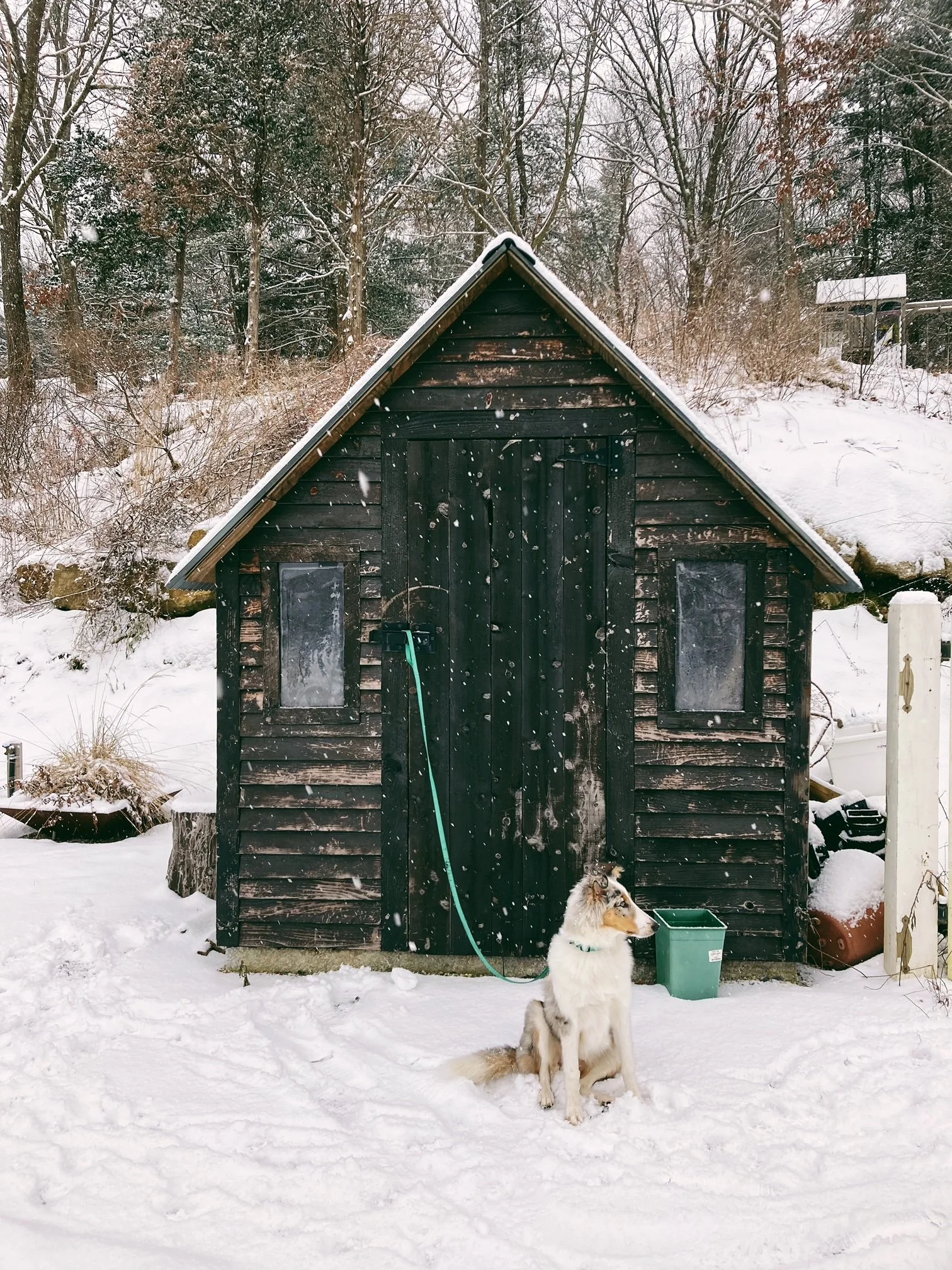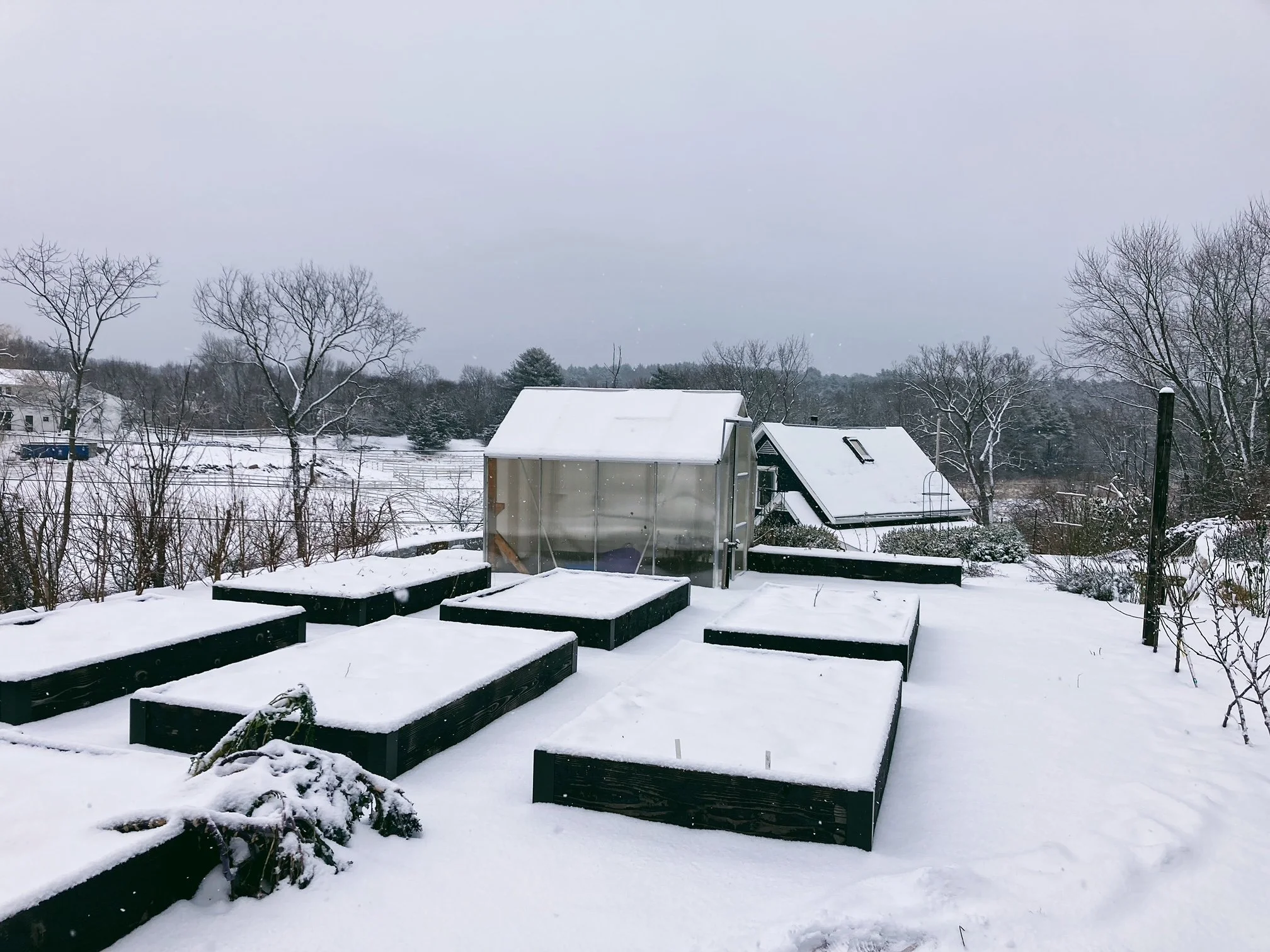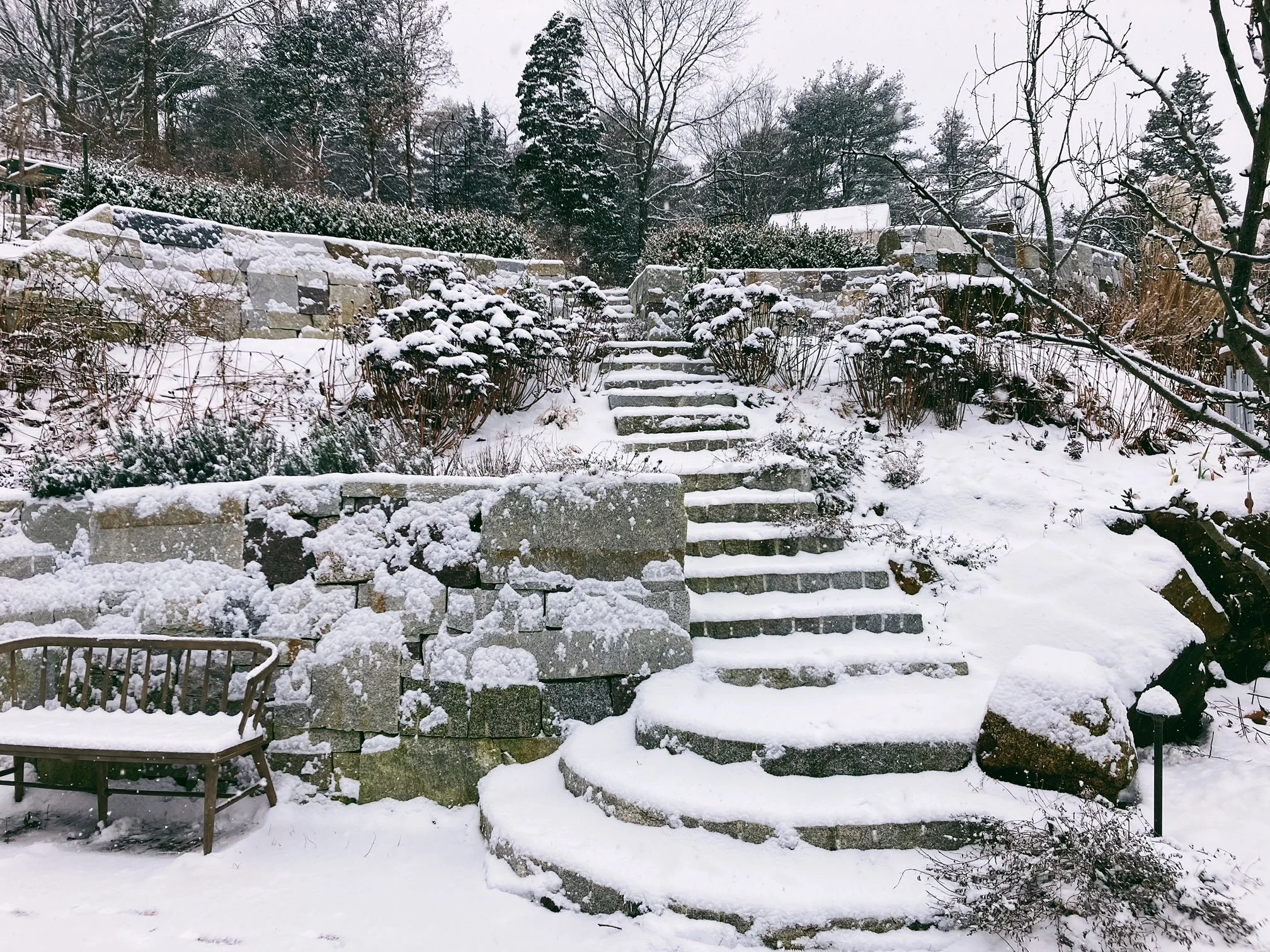January 2024
January, dark, wet, and cold, with wild winds whipping across the fields and racing up our hill. And yet, it won’t really be too long now, before the snowdrops are out, or the witch hazel blooms, maybe spring isn’t exactly around the corner, but the hope of next years garden is already there, and to quote Anne, “there is so much scope for imagination” thinking about the spring garden.
I do very little “proper gardening” in January, I almost make a point not too. Yes I know there are things I could be getting on with, but the truth is most all of them can wait. In January, that is when I dream of the garden. I flip through seed catalogs, order bare root trees / shrubs, come up with sketches for different parts of the garden I want to change, or just sit, a cup of tea to curl hands around, gazing out the window and imagining what I want the garden to look. This is perhaps the most useful of all the “tasks”, it is when I get and idea or appreciate something I hadn’t before. A mental sort of sketchbook if you will.
But if you are inspired to use these last few days to get out and get something done in the garden here are some jobs that you can be getting one with (if you haven’t already!).
Winter JOBS
Organize Seeds
This is a good time to sort through your bin of seeds. Finding out if any are damaged by moisture or far too old to be reliable or if just some do don’t think you will actually use. The seeds that won’t be viable can be added to the compost heap, while packets you won’t use can be given away, at a seed swap or the like. Once that is done take out those catalogs and dream big, pick out plants you want to grow, but before you purchase, I like to go back and come up with a rough plan (that I will most likely changes) of what I am growing where, this helps me not over order, or at least by a lesser degree. I do this over weeks, the looking, the thinking, the sketching, I enjoy the process.
Tool Maintenance
This is a very nice task to do indoors by a warm fire over the course of several evenings or a weekend, or to dedicate a warm day to spend up in the potting shed working. The first step is to get them all and see what needs doing. For me tool maintenance has a zen quality to it, it is easy for me to get lost in the clean, sanding, sharpening process and the end result is very pleasing.
For anything with a solid wood handle, such as shovels, hoes, hand tools, ect. I will use a damp rag with a touch of a mild soap to wipe them all down, getting any thing stuck on the handle off and getting the wood ready to be oiled again.
Next I work on the metal, I will use a bit of wire wool and/or a wire brush to clean the metal, again removing any stuck on residue, then a final wipe down with a lightly damp rag. Then I will take my sharpening stones and go to work on the blades of each, for shovels that would be similar to a knife or a loopers, you are putting back that edge. Once all that is done I oil them with a good linseed oil, rubbing down well.
For our tools with wooden handles we use Sneerboer tools, where handles can easy be replaced if a break does occur, but they are beautiful tools designed to last with proper care.
For tools without wood handles, pruners, loopers, ect., I will still wipe down the handles, but there is usually not much to wipe down. This time of year, if you aren’t too intimidated, it is nice to bring them in, laying them out on a table, take them apart to clean them thoroughly and sharpen the blades as well. I will sharpen the blades throughout the year many times, but winter is a nice time to really clean up your pruners. It can be intimidating. We use Felco for our pruners, loopers and saws and they have a lot of great information on how to care for and maintain your tools. So take a look and give it a go!
Feeding the Birds
One thing we do fairly religiously over the winter months is to feed the birds. Each year we add more feeders, create temporary feeding tables, etc. to set out food for the overwintering bird population. And I can’t express enough how much life and joy it brings to see the birds in and about the garden, they bring so much energy; from the way the house sparrows come in mass and frantically argue about who gets what feeder, or the mated pair of Northern Cardinals that stop in, politely minding their own business. There is the occasional woodpeckers and the Dark-eyed Juncos that hop over from under the yew hedge and collecting any seeds fallen from the feeders. The goldfinches are at the back feeder and the tufted titmouse seem to come in the company of the chickadees most days. While the White Breasted Nuthatches preferring the sunflower seed tubes over the mixes. And of course there are the Bluejays, never more than one or two at a time, but their size makes their presence know.
The important thing is once you set out feed to continue to set out feed, that way the birds don’t waste precious energy/calories coming to find food and it not being there.
Enjoy these winter month, where that is puttering around your garden, or deciding not working on anything yet!



